|
DIFFERENT FORMS OF SIGN LANGUAGE
Sign language is communication by way of using not only hand but also facial expressions.
Contrary to popular belief sign language is not universal but alike to spoken language has regional variations.
The main sign lagnguage in Britain is British Sign Language (usually referred to as BSL). BSL has its own grammar, syntax and structure and is not simply 'signed English'. Some BSL signs do not translate directly into English in the same way that many English words do not translate into BSL with connectives such as 'and' and other words such as 'really' 'for' are simply signed in strict BSL. English phrases and metaphors are also not always appropriate to sign such as 'killing two birds with one stone'. BSL is a purely visual language with no written form- therefore many deaf people for whom BSL is their first language, English may be a second, third or even fourth language. This means that these people may have difficulty in communicating with written language. On March 18th 2003 the government recognised BSL as a language in its own right. (6)
In America the main sign language is American Sign Language (ASL), which is based on French grammar. BSL and ASL differ in the hand and body movements used to represent similar meanings.
It is thought that sign language first originated in France and the French then taught their signs to Americans. This may be represented in the similarities between American and French sign languages which both predominantly use only one hand, whereas BSL uses both.
Furthermore, within Britain itself there are several different sign languages. The most common of these are BSL, sign supported English (SSE) and Macaton. Sign supported English is simply English communicated through hand and facial gesture. The grammar of a 'signed sentence' is identical to English and the signs translate directly into English. SSE is not a language in its own right, but an English-based method of communication usually used by people who lose their hearing later in life. SSE also relies on lip pattern more so than BSL. In BSL 'multichannel signing' is used to convey emotion- with the dramatization of a sign expressing the extent of a feeling.
Makaton is not a sign language used by deaf people. Makaton uses gesture, pictures and diagrams to communicate information. Originally Makaton was developed from BSL but using a range of other factors as well. For more information about Makaton click the link below that will take you to the official Makaton website:
http://www.makaton.org/about/ss_what.htm
Not only does the 'type' of sign language vary but within each 'type' their are regional variations. A deaf person who signs using BSL in Manchester may use very different signs to convey the same meaning to a person who signs using BSL in London. This is often casually referred to as the regional 'dialect' i.e. there are in excess of six different signs used to represent the meaning 'people'.
In addition to this, individuals may use their 'own' signs. In the same way that spoken language often develops 'slang', so can BSL. Individuals who have grown up in isolated deaf families may have their own 'family' sign language that does not use BSL signs.
Nevertheless, deaf people do not experience difficulty in communicating with one another in the same way that two people speaking with different dialects can fully understand one another. Below are five examples of signs used to represent the number six. All of the signs are equally valid and one user may use more than one sign from below.
In Ireland the official sign language is Irish Sign Language (ISL) and in Germany it is DGS- Deutsche Gebardensprache. DGS relies heavily on lip pattern and so is referred to as 'speaking in silence'.
Strictly speaking, BSL is used by capital 'D' ''Deaf' people. SSE is commonly used by hearing people, people who become deafened later in life and or lower case 'd' deaf' people. (See Deaf Awareness- The Deaf Community).
Not all deaf or hard of hearing people choose to sign. Some may prefer alternative methods of communication such as lipreading or rely upon hearing aids or assitance from trained communication workers.
People suffering from Usher's syndrome may also use sign language (see hearing loss). However, as usher's syndrome combines hearing and visual impairment simple sign language cannot always be used. People suffering from Usher's Syndrome may instead use hands-on signing where they hold the hands of the person who is signing to them and then sign themselves in response.
For more information on the origins of sign language why not try the link below which takes you to an Australian site where the main sign language used is called Auslan.
http://www.aad.org.au/info/auslan1.php
BABIES AND SIGN LANGUAGE
Its finally happened- a sign language craze. It is thought and suggested by research (see http://www.signbabies.com/articles.php/tPath/5?osCsid=34d83f0d1005772ea0cf1837da1e715b ) that taching babies sign language at such a young age will help to develop their communication skills or even allow parent-child communication before the baby is able to speak. The 'perfect' age to start is supposedly between six and nine months, but even older children are supposed to benefit.
For more information try clicking on the picture of link below:
For a research orientated article on the effect of teaching babies sign language try this link to 'New Scientist Magazine's' website: http://www.newscientist.com/article.ns?id=dn6154
LEARNING SIGN LANGUAGE Sign language is one of the most popular night school courses in Britain today. Many people decide to learn sign to be able to communicate with friends, family, co-workers, clients or may simply learn for fun. There are two different sign languages that are routinely offered at night schools: British Sign Language and Sign Supported English.
For a person hoping or interested in pursuing a career as a sign language interpreter then British Sign Language is the course to take. (SSE simply aids informal communications.) There are four levels of study of British Sign Language: level one, level two, NVQ level three and NVQ level four. Levels one and two have final examinations which are externally moderated by the national BSL exam board the 'Council For Advancing Communications Between Deaf And Hearing People' (CACDP). The level one course itself is taught in many FE colleges, whilst level two in mainly taught in universities and a few FE colleges. Level one (as assessed by CACDP) requires 60 hours of classroom study. Level two requires 90 hours of classroom study and 30 hours of interaction with the deaf community. Depending on where these levels are studied a typical level one may take anywhere between six to twelve months to complete whilst level two may take between one and two years. In addition to these traditional teaching courses where you have a period of classroom study every week of 2-3 hours, there are crash courses, or weekend courses that may be taken for levels one and two followed by a final exam. Due to demand for sign language tutition, a wide variety of courses and options for learning are available. What to expect? Many people worry about what to expect prior to starting a sign language course. Below are a few common questions or concerns: Will the tutor be hearing? The likelihood is that the tutor will be deaf, however there are many hearing BSL tutors. Some people believe that having a deaf tutor is beneficial as this puts greater emphasis on learning sign language quickly in order to be able to communicate more easily with the tutor. How will I be taught (level one)? Teaching styles vary, but a common approach is for the tutor to distribute a handout listing many different words and meanings on a particular topic. The tutor then points to each word in turn and demonstrates the sign before moving onto the next. This process may seem tedious but using exercises such as signing with a partner, role plays and various games, a vocabulary base is established and towards the end of level one this is developed and grammar is taught. But bare in mind that teaching style can vary dramatically. How big will my class be? Average class sizes range from eight to thirty. Ideally small class sizes are preferential as they all more student-tutor interaction. What is the final assessment? The final exam for level one involves a three part exchange with an examiner. Whilst the actual content of the exam is constantly changing the current content is a guided role play, followed the examiner telling a story and asking questions and then finally the student telling a story. All of the exchange is in British Sign Language and this is filmed and marked. Level two's assessment is similar however it involves a 5-8 minute unscripted three-way conversation with two deaf examiners and many other differences, ie. the student story must last a minimum of three minutes. Why learn sign language? Learning sign language can be beneficial to people with deaf friends, family and colleagues or may simply be learnt for fun. Some people may embark upon the courses intent upon becoming a BSL interpreter, or may want to work with deaf people. There are a whole host of reasons for people learning sign language and classes are often very mixed. However, all of the information above are guidelines and the exams are subject to constant change and sp before booking onto a course first consult CACDP's own website by clicking the link below:
|
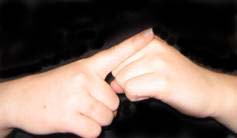
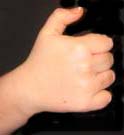

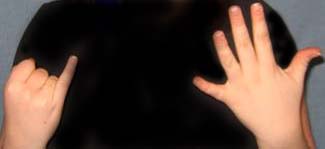
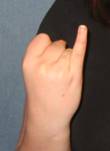
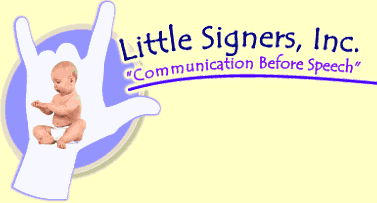
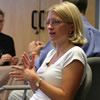 (5)
(5)